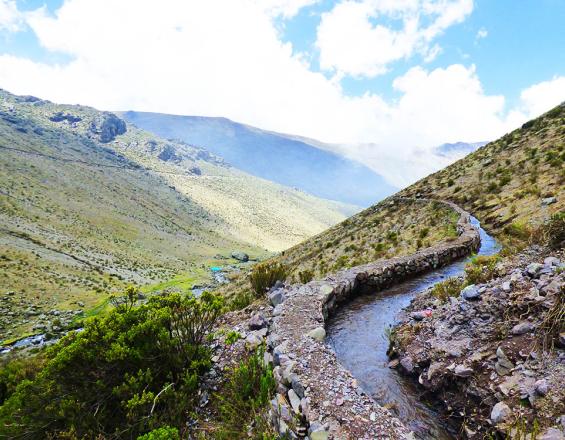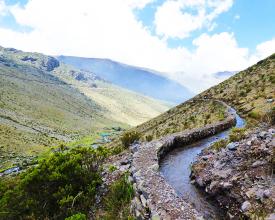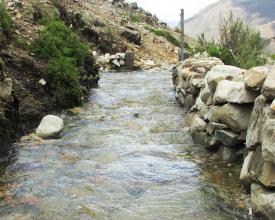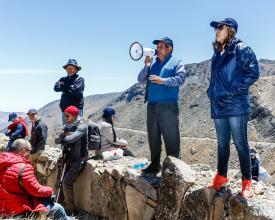
Reviving pre-Incan techniques to strengthen water security in Lima, Peru

Lima is facing severe water scarcity exacerbated by climate change and unregulated urban growth. To ensure a sustainable supply of water, the city is now investing in reviving pre-Incan technology to restore ancient channels in nearby mountainous watersheds. In the past, indigenous communities used infiltration techniques that relied on seasonal water flows. During the wet season, water was guided through infiltration ditches, seeping into an underground aquifer. In summer, the water emerged back onto the surface in low-lying parts of the mountain. Communities intimately understood the underground hydrological system – which canal infiltrated to which water spring. This type of water management provided them with a year-round water supply. Through the Natural Infrastructure for Water Security (NIWS) programme, this ancient knowledge is being put into practice once again. The restored water system increases local farmers' water yield and helps to sustain a reliable supply to Lima downstream.
Impacts
Lima has historically relied on seasonal Andean flows from surrounding watersheds. Under a changing climate, glacial runoff will slowly disappear, increasing water scarcity in the dry season. Wet seasons are predicted to shorten while dry seasons lengthen. By slowing down the flow of water and recharging water stores, the pre-Incan techniques improve hydrological regulation and sustain supplies throughout the dry season.
The project shows the need to consider highland-lowland relations in addressing urban water challenges. Sustainable water management requires a systemic full-watershed perspective. Highland watershed communities should be acknowledged as stewards of ecosystems that provide vital services to lowland communities.
Additionally, it highlights the importance of supporting communities in rediscovering ancestral practices. The project shows how indigenous knowledge can offer a valuable complement to modern science and engineering. It underlines the importance of involving communities in the co-creation of sustainable development solutions.






